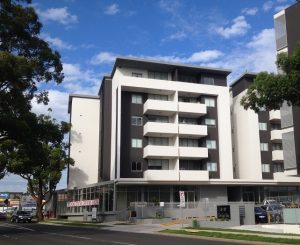 In the face of greater competition and rising housing costs, renters are using new technologies and resorting to precarious and informal arrangements to access housing, new Australian Housing and Urban research Institute (AHURI) research reveals.
In the face of greater competition and rising housing costs, renters are using new technologies and resorting to precarious and informal arrangements to access housing, new Australian Housing and Urban research Institute (AHURI) research reveals.
The report, Navigating a changing private rental sector, undertaken by researchers from Swinburne University of Technology, Curtin University and University of NSW, examines the challenges and opportunities for low-income renters as they attempt to navigate a changing private rental sector (PRS).
More Australians are renting and long-term renting continues to increase across all income groups, generating high competition for the limited dwellings that are affordable on low incomes
The research looks at the three pathways – the formal, informal and supported pathways – used by low-income renters to access the PRS.
Low-income renters attempting to access housing through the formal pathway – mainstream real estate agents and governed by residential tenancy acts – often come up against financial and social barriers.
Many instead turn to informal pathways where rooms and dwellings are privately managed by landlords and sub-landlords.
Once considered a “black market’’, these informal arrangements have grown considerably with the expansion of new technologies such as online rental platforms and social media networks that connect tenants directly with landlords.
“We are seeing a lot more individuals or singles trying to find accommodation and form households, particularly in the context of large numbers of students looking for accommodation in high demand areas,’’ says Dr Sharon Parkinson of Swinburne University.
“While informal rental arrangements prevent people from street homelessness, they are having to increasingly rely on their own networks and solutions that are highly precarious, and dependant on the quality of relationships with others in the household including sub-landlords.’’
 The research further identified four sub-pathways within the informal pathway:
The research further identified four sub-pathways within the informal pathway:
- the “time-limited niche apartment pathway’’ characterised by purpose-built and privately managed accommodation targeted at specific subgroups or “niche’’ markets, such as international students
- the “collaborative consumption pathway’’ brings together like-minded people who are connected via social media in shared living arrangements
- the self-managed dwelling pathway, where dwellings are directly rented out and managed by a private landlord
- the “rogue pathway of last resort’’ which is associated with unregistered boarding houses or room rentals.
Without the transparency and oversight that formal arrangements ensure, informal arrangements allow landlords and sub-landlords to lease their dwellings in various ways that capitalise on soaring rents in high demand areas.
“We often see in the rogue pathway of last resort tenants are overcrowded in small apartments, where landlords convert living areas into sleeping space in order to increase rental returns,’’ says Dr Parkinson.
“These tenancy arrangements are highly exploitative and typically violate tenants’ rights, particularly their safety.’’
Other low-income renters locked out of the mainstream rental market rely on supported pathways – via small-scale government or community programs that provide support and subsidies.
However, these programs are time-limited and the research suggests they are inadequate in meeting demand.
The research provides practitioners and policy makers with an evidence base to keep pace with the changing practices and technological shifts, and ways forward in shaping equitable PRS institutions.
The report can be downloaded from the AHURI website at:
http://www.ahuri.edu.au/research/final-reports/302



